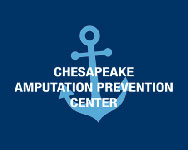How Should You Care for the Pin Sites?
Your doctor may recommend different cleaning techniques or solutions depending on the type of external device and the extent of your injury or fracture. In any case, use common sense with your external fixation device. Wash your hands well and often before cleaning your pin sites or the device. Be gentle and thorough, and dry everything carefully. The cleaning process should be followed routinely even if your doctor has prescribed antibiotics as a preventative measure.
- Get it together. Since you'll be cleansing your pin sites and the device twice a day, it may make the most sense to gather everything you'll need and keep it handy and dry in a central location. You'll need a cleansing solution (sterile water), disposable cups, sterile cotton swabs, sterile gauze pads (in two-inch and four-inch squares), and a small trash bag to dispose of soiled gauze pads and swabs.
- Cleanse the pin sites. After washing and drying your hands thoroughly—doctors recommend drying with a fresh paper towel and discarding it after use—use your fingertips to lightly touch and press the skin around the pins. This will encourage any drainage to come to the surface. Use a cotton swab saturated with cleansing solution to remove any crust or drainage from the pin sites. Always work in a gentle, circular motion, moving away from the site. Use a fresh swab for each pin site.
- Clean the pins. Use a fresh two-inch sterile gauze pad to clean each pin. For the first few days, your doctor may advise you to wrap sterile gauze around each pin site. Once no further drainage is present, the pin sites may be left uncovered.
- Clean the device. Use cotton swabs and the larger gauze pads to clean the entire fixator device carefully. Dispose of all the soiled swabs and pads. Wash and dry your hands thoroughly.
- Take a shower. After ten days or so (your doctor will advise you), you may be allowed to shower with your external fixator. Dry the fixator thoroughly with a clean towel and follow all other cleaning instructions for the pin sites.
Be sure to talk with your doctor, or a reconstructive foot and ankle surgery podiatrist if you have any questions on how best to care for your fixator and the pin sites.
What Are the Symptoms of Infection?
No matter how carefully you've looked after your pin sites, an infection is still possible. Contact your doctor immediately if you observe redness or swelling at the pin site, thick or colored discharge, tenderness or pain, or any wiggling, play, or movement in the pins.


 We're all acquainted with the non-surgical approaches that help a broken bone heal: the doctor applies a cast, brace, or splint around a fracture or a corrected bone deformity to provide support during the healing process. In some cases, however, particularly more severe injuries, today's best orthopedic treatment includes securing the fracture surgically externally with a device called a fixator that is connected to the affected bone with special bone screws, often referred to as pins. The device remains outside the body (external) and the pins pass through the skin and muscle to secure the bone in proper alignment.
We're all acquainted with the non-surgical approaches that help a broken bone heal: the doctor applies a cast, brace, or splint around a fracture or a corrected bone deformity to provide support during the healing process. In some cases, however, particularly more severe injuries, today's best orthopedic treatment includes securing the fracture surgically externally with a device called a fixator that is connected to the affected bone with special bone screws, often referred to as pins. The device remains outside the body (external) and the pins pass through the skin and muscle to secure the bone in proper alignment.

